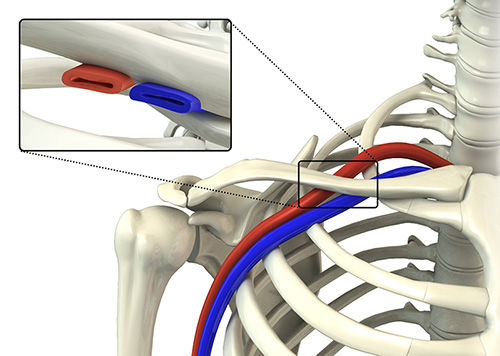The Adson Test: A Guide for Remedial Massage Therapists
- 5 Hours CPD Points Awarded Details Below

- Mar 5, 2024
- 2 min read
Introduction Adson Test for Massage Therapist
As a dedicated remedial massage therapist, you're no stranger to the importance of thorough assessments and diagnostic techniques to provide the best care for your clients. One such technique that holds significant value in the assessment of thoracic outlet syndrome (TOS) is the Adson Test. In this blog post, we will delve into the Adson Test, its purpose, procedure, and how it can assist you in your practice.

What is the Adson Test?
The Adson Test, named after its creator, Dr. Alfred Washington Adson, is a clinical maneuver used to assess the potential presence of thoracic outlet syndrome (TOS). TOS is a condition that occurs when nerves or blood vessels in the thoracic outlet (the area between the collarbone and first rib) become compressed, leading to pain, numbness, tingling, and other uncomfortable symptoms in the upper extremities.
Purpose of the Adson Test
The primary goal of the Adson Test is to determine if compression or impingement is occurring in the thoracic outlet region. This test can help identify TOS, which is crucial for proper diagnosis and treatment planning. As a remedial massage therapist, understanding this test can help you better assist your clients who may be experiencing TOS-related symptoms.
Procedure
The examiner will stand at the patient's side and palpate the radial pulse on the arm being checked. Instruct the patient to extend their neck and rotate their head in the direction of the arm you are holding. Request that the patient take a deep breath and hold it while you check the radial pulse for changes.
The Adson's test is regarded as positive if the radial pulse on the tested side changes diminishes, or disappears entirely. As a reference, the examiner should compare the pulse to the opposite arm.
Related posts and links
Interpreting the Results
If the radial pulse diminishes or disappears during the Adson Test, it suggests that there may be compression of the nerves or blood vessels in the thoracic outlet. This finding warrants further evaluation and possibly diagnostic imaging to confirm the diagnosis of TOS.
Conclusion
The Adson Test is a valuable tool in the assessment of thoracic outlet syndrome. As a remedial massage therapist, having a solid understanding of this test can help you identify clients who may be experiencing TOS-related symptoms. If you suspect TOS in a client based on the Adson Test, it's essential to refer them to a medical professional for further evaluation and appropriate treatment.
By incorporating the Adson Test into your assessment repertoire, you can enhance your ability to provide effective care and support to clients dealing with thoracic outlet syndrome, ultimately helping them on their path to recovery and relief from their discomfort.






Comments